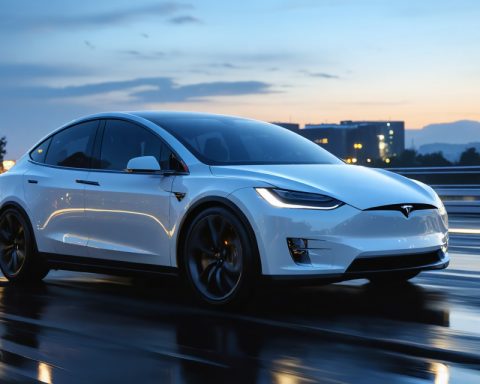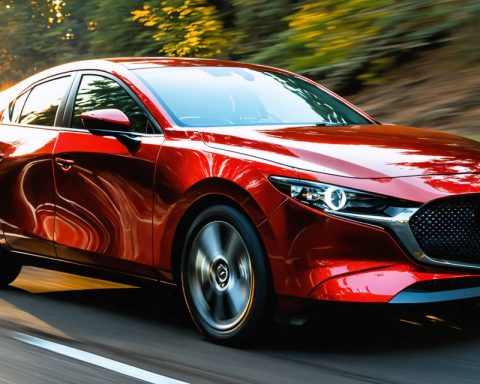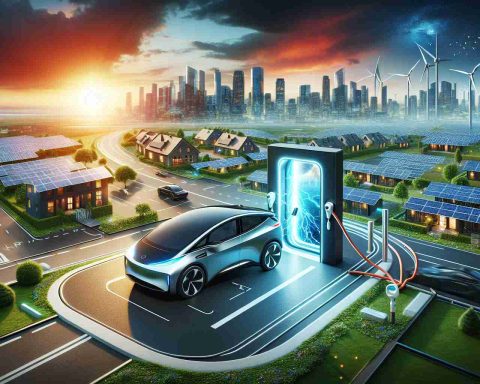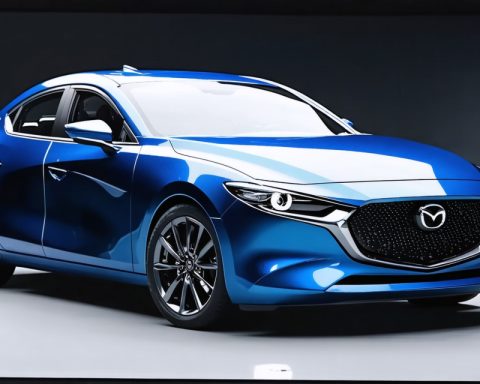- Tesla, amid controversies and market challenges, is experiencing a pivotal shift in the electric vehicle (EV) market.
- EVs are expanding beyond the “tech bro” demographic, with potential for broader adoption crucial for reducing global greenhouse gas emissions.
- Concerns remain, such as battery-related pollution and limited access to charging infrastructure.
- The IPCC suggests a three-step approach for reducing car dependency: avoid unnecessary travel, shift to public transport, and improve technology.
- Affordability is key to wider EV adoption; countries like Norway succeed with subsidies, making EVs accessible to all.
- Increasing EV sales indicate a trend toward broader market acceptance; smaller, affordable models are vital for future growth.
- The EV industry can capitalize on Tesla’s challenges by promoting inclusive, sustainable messaging to appeal to diverse consumers.
In the bustling streets of Oakland, California, a reimagined World War II poster declared, “When you ride Tesla, you ride with Hitler.” This stark image captured the complex narrative swirling around Tesla and its CEO, Elon Musk. As the company navigates controversies linked to political affiliations with Trump’s MAGA movement, it’s facing protests, declining sales, and plummeting stock prices. But there’s an unexpected turn to this tale—a chance for electric vehicles to reach beyond their niche beginnings.
Beyond Tech Bros
The landscape of electric vehicles (EVs) is transforming, no longer just for the wealthy and tech-savvy. Hannah Budnitz of Oxford University notes that the political storm surrounding Tesla might ironically crack open the market for a wider audience, moving it beyond the “tech bros” of its early days. This shift is crucial for the climate, given that cars account for a fifth of global greenhouse gas emissions. Yet, EVs aren’t a one-stop solution.
Despite their eco-friendly image, electric cars have their downsides. Their hefty batteries mean rapid tire wear and more microplastic pollution, as ecotoxicologist Henry Obanya points out. And not everyone has the luxury of a garage or charging station, a hurdle to widespread adoption. So, how do we drive a genuine shift away from fossil fuels?
Avoid, Shift, Improve
The answer might lie in a strategic pivot. The Intergovernmental Panel on Climate Change (IPCC) advocates for a three-step approach: avoid unnecessary travel, shift to public transport, and improve technology. Redesigning cities to support walking and mass transit could reduce our car dependency far more effectively than electric cars alone.
Yet, what motivates a typical driver to trade in their gas guzzler for a sleek, silent EV? The answer in one word: affordability. Norway exemplifies this model, where generous subsidies make zero-emission cars accessible to all, leading to nearly 89% of 2024’s car sales being electric.
The Price Factor
Affordability is the game-changer. In 2010, Tesla’s strategy targeted affluent early adopters, and it worked. But now, as the market matures, it’s the ability to reach a wider demographic that will drive change. Economic historian Josef Taalbi highlights that when electric cars were first marketed in the early 1900s, their sales strategy appealed mainly to women, a demographic presumed at the time to have modest mobility needs due to societal constraints. This strategy helped some manufacturers outlast their competitors.
Fast forward to today, EV sales have skyrocketed from fewer than 60,000 in 2013 to almost that many sold daily a decade later. The key to sustaining this growth is making EVs feasible for everyone. Smaller, more affordable models could hold the key to breaking down financial barriers and achieving a greener future.
A New Era Beckons
Tesla’s troubles may seem like a setback, yet they offer an opportunity to reshape the narrative around electric cars. By broadening its appeal beyond tech enthusiasts and focusing on inclusive, equitable messaging, the EV industry could accelerate its journey to mainstream dominance. The promise of cleaner, greener travel is more within reach than ever, but it needs a cohesive strategy to ensure everyone can partake in this electrifying revolution.
Is Tesla’s Turbulence the Tipping Point for the EV Revolution?
The recent controversies surrounding Tesla and its CEO Elon Musk have highlighted a critical juncture in the electric vehicle (EV) landscape. As political affiliations and fluctuating sales become focal points of discussion, a unique opportunity has emerged for EVs to surpass their niche status and cement their place in the mainstream market.
EVs: Moving Beyond the Tech Elite
The transition of EVs from luxury items for the affluent to essential vehicles for everyday consumers is one of the most significant shifts in the automotive industry. This democratization is vital, considering that the transportation sector contributes significantly to global greenhouse gas emissions. However, achieving widespread adoption of EVs comes with its own set of challenges and considerations:
– Affordability: The primary barrier to EV ownership remains cost. Countries like Norway have demonstrated that financial incentives, such as tax breaks and subsidies, significantly increase EV adoption rates. For other nations, implementing similar strategies could replicate this success.
– Infrastructure: Expanding charging infrastructure is critical. The absence of convenient and accessible charging points deters potential buyers. Future city planning should prioritize the integration of charging stations in residential areas and public spaces to accommodate this need.
– Battery and Environmental Concerns: The ecological impact of EVs is not negligible. While they reduce reliance on fossil fuels, the production and disposal of batteries pose environmental challenges. Innovations in battery technology, such as solid-state batteries, are pursuing improvements in longevity, recycling, and reducing reliance on rare minerals.
How to Make EVs More Accessible
To pave the way for a broader audience, companies and governments must collaborate on several fronts:
1. Policy and Incentives: Introduce or enhance incentives such as tax credits, rebates, and reduced registration fees for EVs to make them financially competitive with traditional vehicles.
2. Infrastructure Development: Invest in robust charging networks to remove range anxiety and encourage easier adoption for people without personal garages.
3. Public Awareness and Education: Launch campaigns to educate the public on the long-term cost benefits and environmental advantages of EVs, breaking stereotypes and demystifying concerns about performance, reliability, and maintenance.
4. Diverse Vehicle Offerings: Develop a range of EV models catering to various needs and budgets, from compact cars for urban environments to SUVs for family use, ensuring that all demographics are represented.
Market Trends and Predictions
The global EV market is slated to continue its explosive growth:
– Sales Projections: According to the International Energy Agency (IEA), EV sales could surpass 30% of global new car sales by 2030 if supportive policies and technological advancements continue.
– Technological Advancements: Battery prices are expected to fall as technology improves, possibly resulting in price parity between EVs and traditional vehicles within the next decade.
– Changing Consumer Preferences: Younger generations show a marked preference for sustainable products. As these consumers gain buying power, their preferences are likely to drive the market further toward renewable and eco-friendly options.
Actionable Tips for Potential EV Buyers
– Assess Your Needs: Evaluate your daily commuting distance and available charging infrastructure to choose a suitable EV model.
– Consider Total Cost of Ownership: Factor in savings on fuel, maintenance, and potential incentives when comparing EVs to internal combustion engine vehicles.
– Stay Informed: Follow market trends and government policies that could impact EV affordability and accessibility in your area.
The path forward for the EV industry involves an integrated approach that combines technological improvements with strategic policy-making. By addressing current limitations and leveraging emerging trends, the EV sector can transform into a pivotal force for environmental sustainability.
For more insights on sustainable automotive trends and industry news, visit International Energy Agency.













